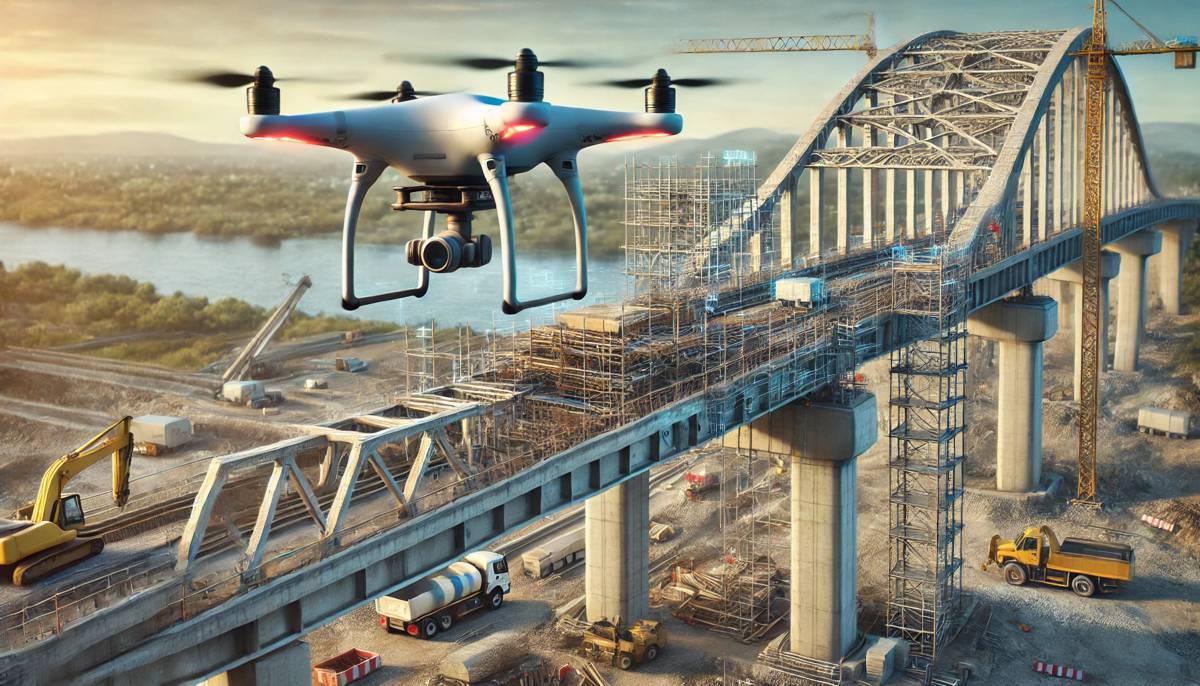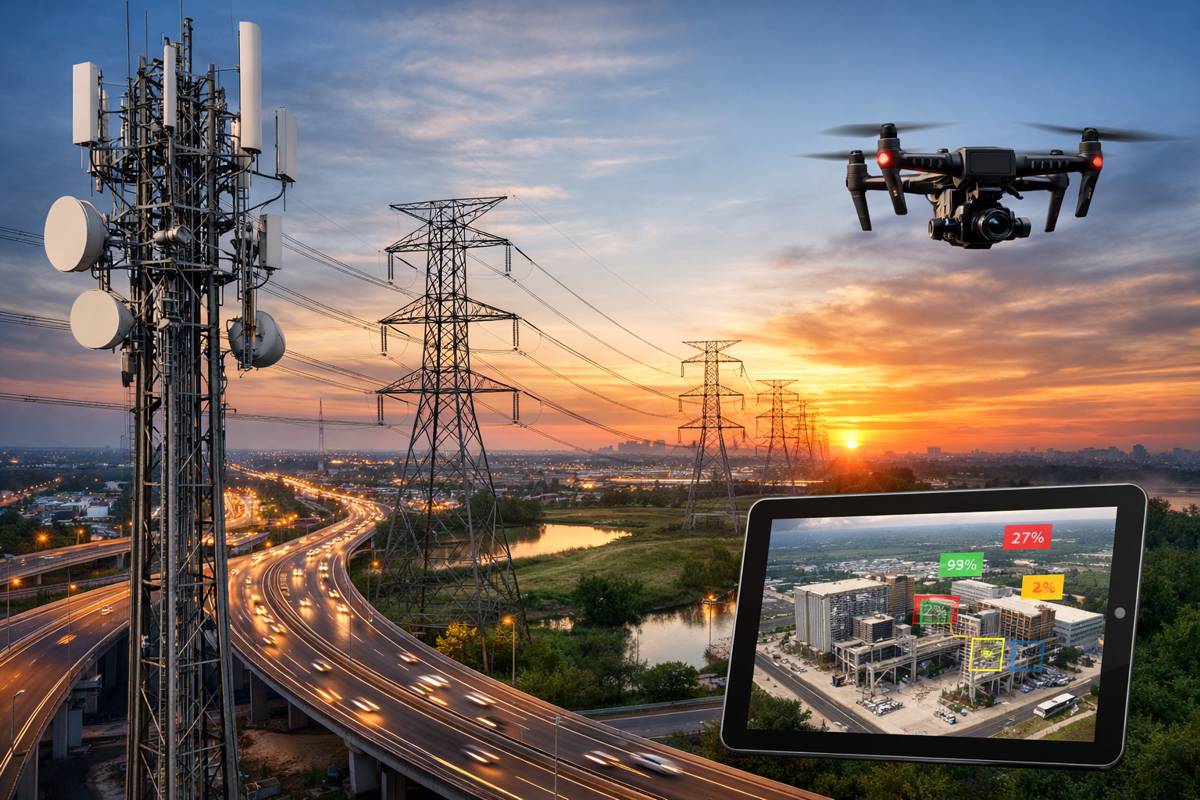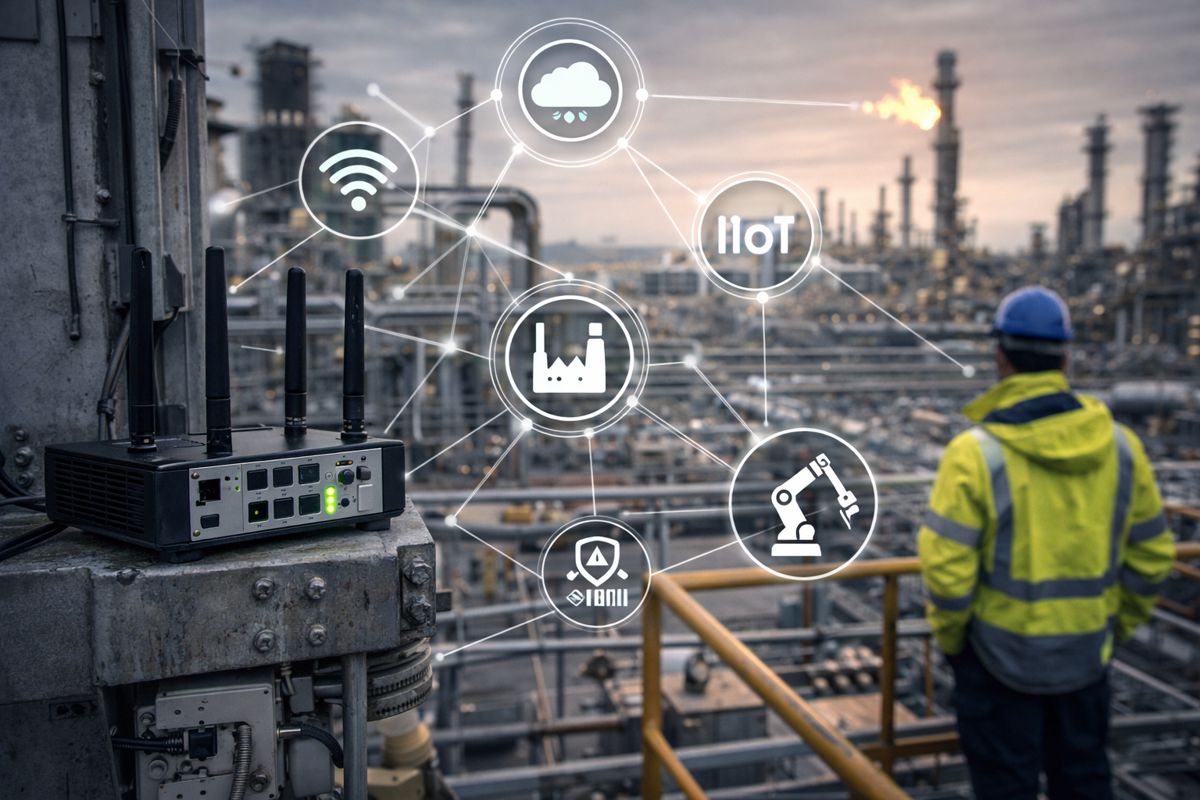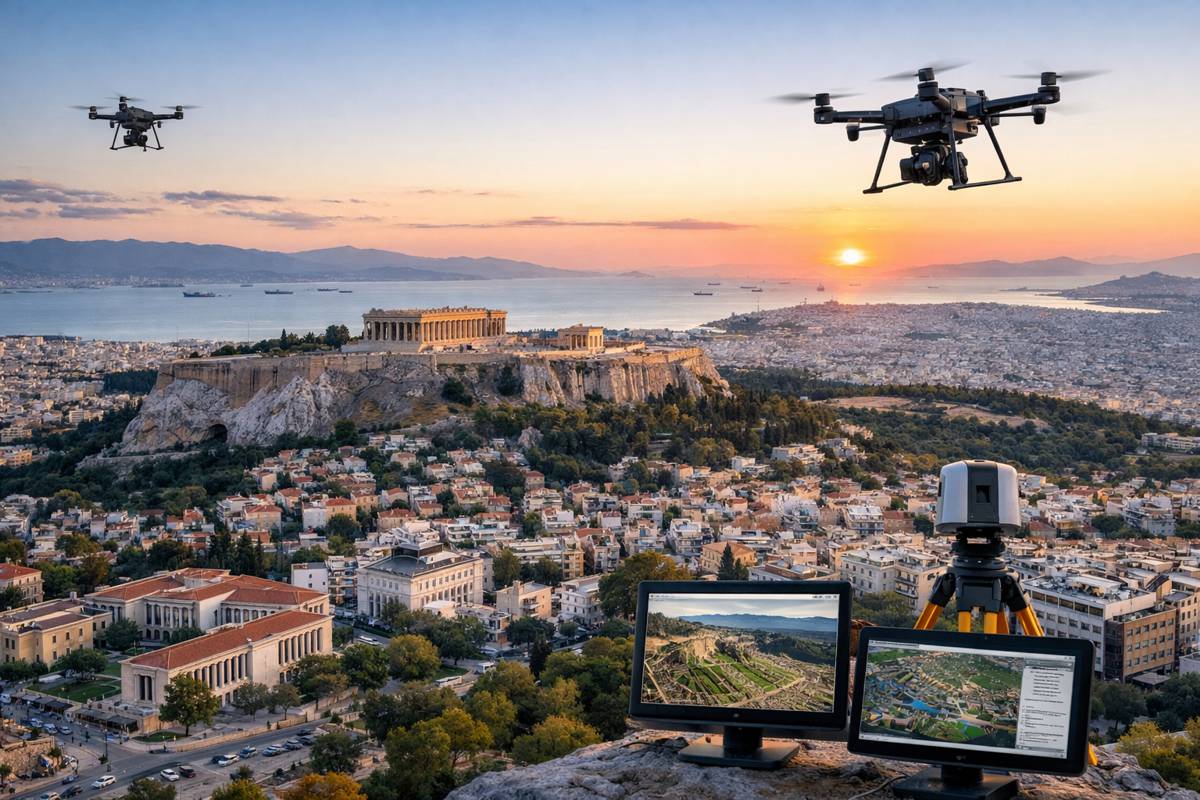Drones in Construction Transforming Site Management and Beyond
Drones have rapidly evolved from niche technology into essential tools within the construction industry. Their ability to provide aerial perspectives and gather critical data has revolutionised how construction projects are planned, monitored, and executed.
With the capacity to survey large areas in a fraction of the time traditional methods require, drones have become integral to improving efficiency, safety, and precision on job sites.
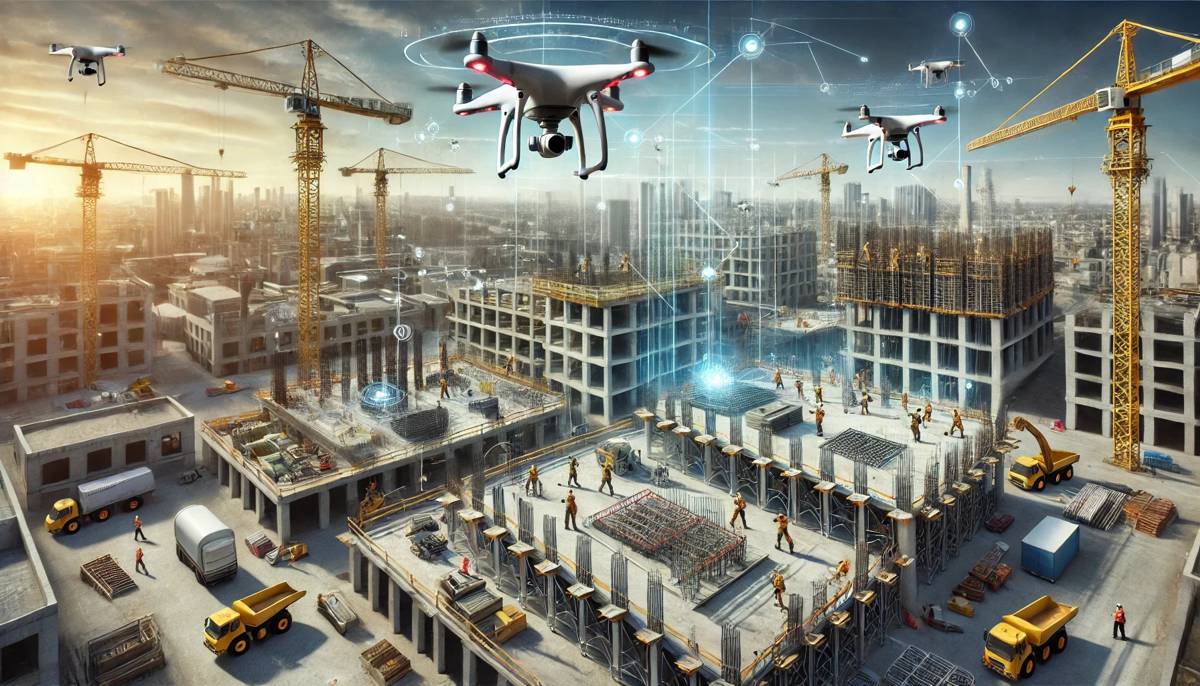
Current Applications of Drones in Construction
The construction industry’s adoption of drones has grown exponentially over recent years, driven by their versatility and efficiency. Here’s a look at the primary ways drones are currently being used:
- Site Surveying and Mapping: Drones equipped with high-resolution cameras and sensors can quickly generate detailed maps and 3D models of construction sites. This capability not only saves time but also provides more accurate data for project planning and site layout. Traditional surveying methods can be labour-intensive and time-consuming, whereas drones can complete the same tasks in a fraction of the time, often with greater accuracy.
- Progress Monitoring and Reporting: One of the most common uses of drones is to track and document construction progress. Project managers use drone-captured imagery and videos to create up-to-date visual records of the site. These can be shared with stakeholders, ensuring everyone remains informed about project timelines and milestones. This visual data is also crucial for identifying potential issues before they escalate into costly delays.
- Safety Inspections and Hazard Identification: Safety remains a major concern on construction sites, and drones are playing a key role in enhancing worker safety. By conducting aerial inspections, drones can quickly identify hazards such as unstable structures, electrical risks, or unsafe access points without putting human workers at risk. They can also be used to monitor compliance with safety regulations in real-time.
- Inventory and Asset Management: On large-scale construction sites, keeping track of materials and equipment can be a logistical challenge. Drones provide an efficient solution by scanning and counting inventory from the air. This data is then integrated with management systems to streamline operations and reduce wastage.
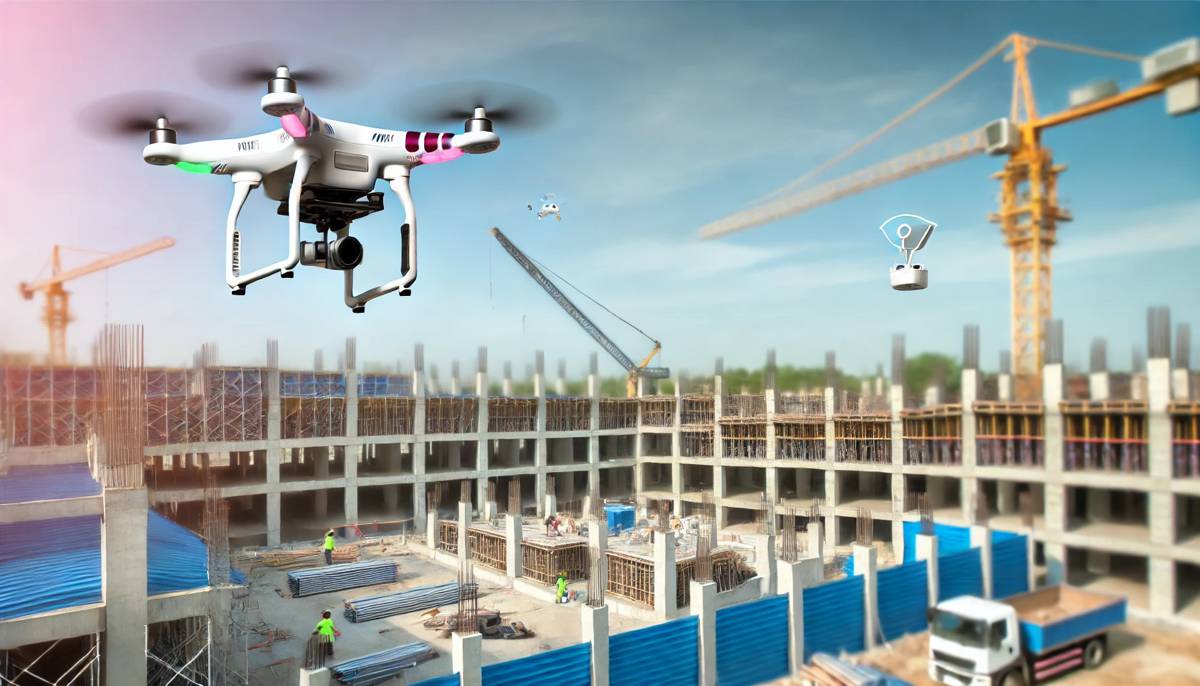
Future Applications of Drones in Construction
As drone technology continues to advance, their role in construction is expected to expand even further. Here’s a glimpse into how drones might shape the future of the industry:
- Automated Construction Monitoring: The future of drone use in construction lies in full automation. Autonomous drones that can fly pre-programmed routes and gather data continuously without human intervention will soon become standard. These drones will be capable of conducting regular inspections, tracking progress, and flagging potential issues, all while feeding real-time data into AI-powered systems for predictive analysis and decision-making.
- Precision 3D Printing and Construction: While still in the research phase, drones could eventually be used for construction tasks like 3D printing of structures. In controlled tests, drones have been shown to work collaboratively to build complex structures, such as bridges or walls, layer by layer. This concept, known as “drone swarming,” could one day lead to fully autonomous construction teams working in hard-to-reach or hazardous locations.
- Enhanced Data Integration with AI and BIM: As Building Information Modelling (BIM) continues to be integrated into construction workflows, drones will play a more significant role in data collection and integration. By capturing real-time site data, drones will be able to directly feed information into BIM models, updating plans automatically and enabling more precise project management. AI-powered drones will further enhance this capability by using machine learning to detect issues and make recommendations, leading to smarter, more responsive construction sites.
- Disaster Response and Recovery: Drones are also poised to play a critical role in post-disaster construction efforts. After natural disasters or severe weather events, drones can quickly assess damage, map the extent of destruction, and assist in planning reconstruction efforts. By deploying rapidly and covering large areas, they provide crucial information for allocating resources and prioritising rebuilding efforts.
- Surveying for Smart Cities and Infrastructure Projects: As urbanisation increases, there is growing interest in using drones to survey and map vast urban areas for the development of smart cities. Future drones will be equipped with even more advanced sensors, capable of collecting environmental data, monitoring urban growth, and helping to plan large-scale infrastructure projects that align with sustainability goals.
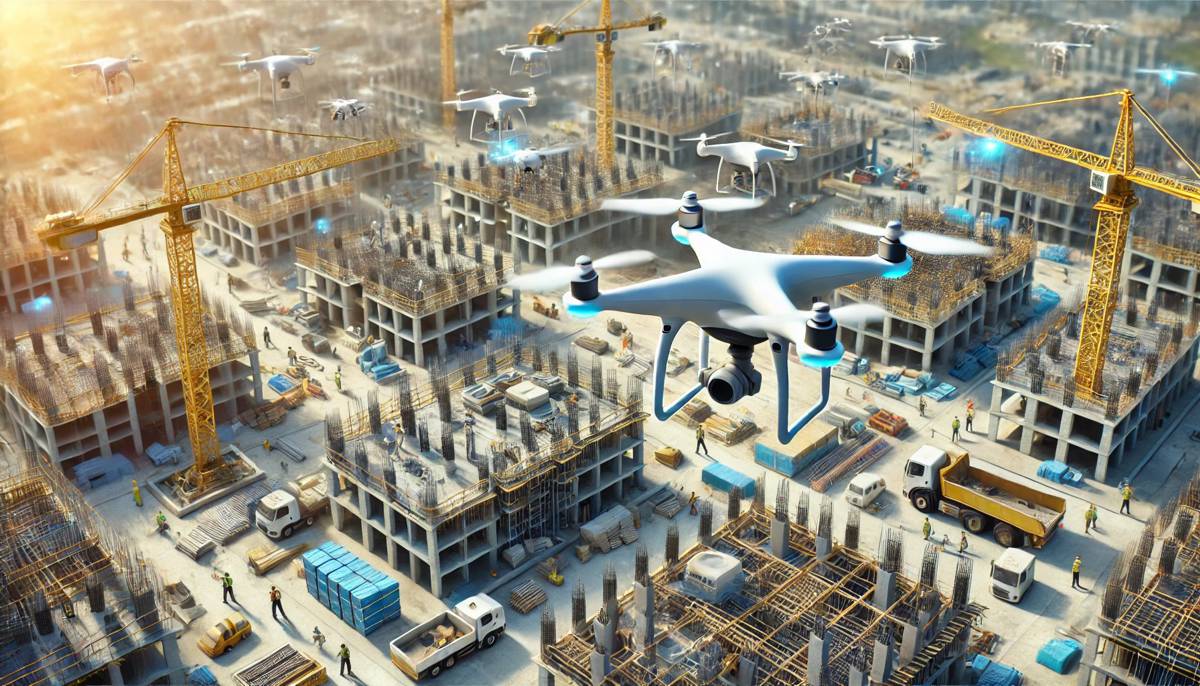
Companies Leading in Drone Technology for Construction
Several companies are at the forefront of integrating drone technology into construction workflows:
- DJI: A global leader in drone technology, DJI has developed specialised drones for construction applications, such as the DJI Phantom and Mavic series. Their drones are widely used for aerial mapping, 3D modelling, and site inspections.
- Kespry: Focused on industrial use cases, Kespry offers drone solutions tailored for construction, mining, and insurance. Their platforms provide end-to-end solutions, from aerial data capture to analytics and reporting.
- Parrot: Known for their user-friendly drones, Parrot offers systems designed for 3D mapping and surveying. Their drones are often integrated with software platforms that cater to the construction industry, offering a seamless transition from data collection to actionable insights.
- Propeller Aero: Specialising in drone software, Propeller Aero partners with various hardware providers to deliver comprehensive drone solutions for construction. Their cloud-based platform converts drone data into interactive maps and 3D models, making it easier for project managers to visualise and analyse site data.
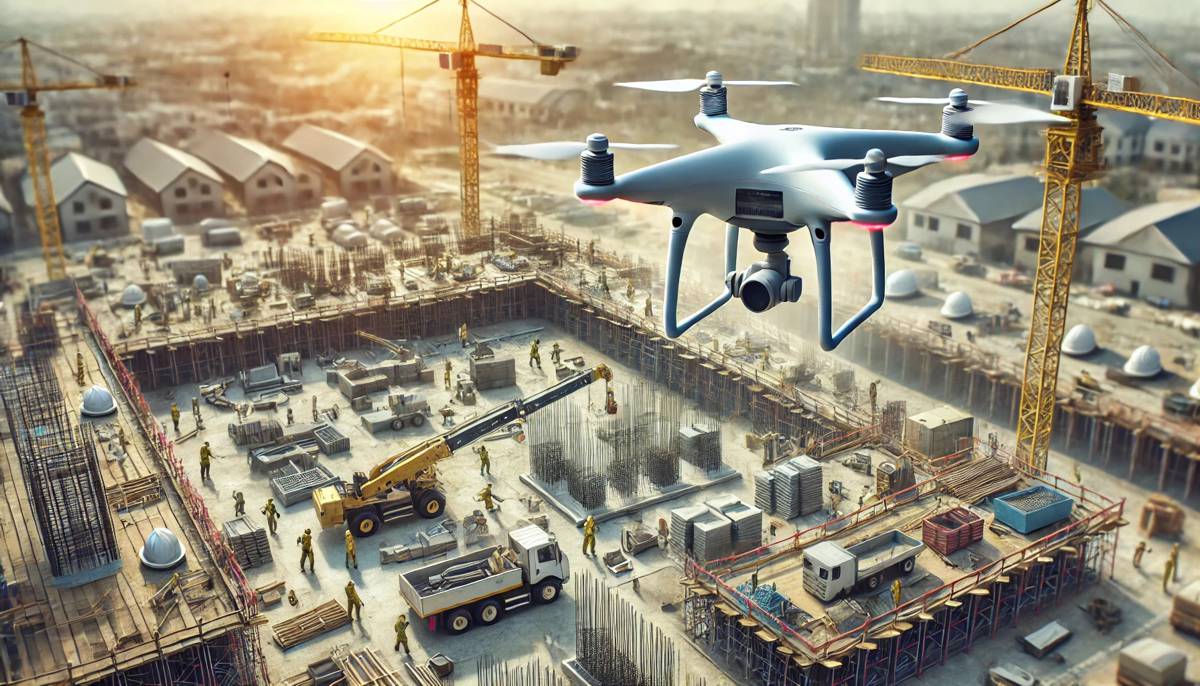
The Transformative Potential of Drones in Construction
The impact of drones in construction is already evident, but the future holds even more exciting possibilities. As the technology becomes more sophisticated and autonomous capabilities improve, drones will shift from being valuable tools to becoming indispensable components of the construction workflow.
The integration of AI, real-time data analytics, and advanced sensors will further unlock the potential of drones, making construction projects more efficient, cost-effective, and safe.
